Garbage: We Ought to Think About It
Do you ever think about all the garbage we create in any given month? Or what we’d do with it all if our trash pick-up service were interrupted for any length of time?
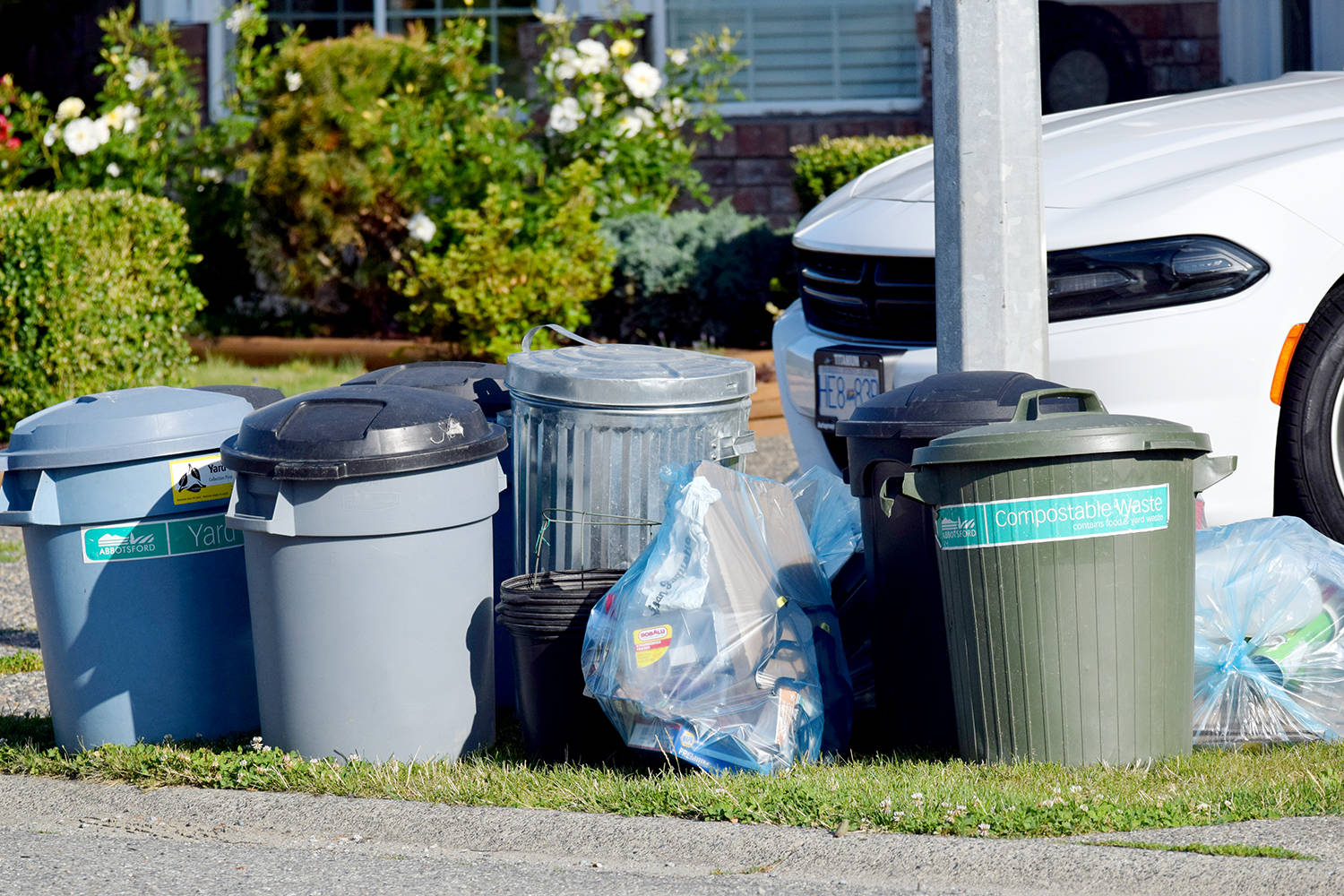
We ought to think about it, because it’s a serious issue and could very well be part of our picture if this country’s infrastructure collapses (like some people believe it will).
Garbage is one of the biggest threats we face during a long-term disaster. Specifically:
The Threat of Illness. Garbage pick-up service slip to the bottom of the priority list as municipalities scramble to restore basic services such as electricity and water. This means garbage will accumulate quickly. As waste stops being collected the threat of illness increases. History shows diarrhea and respiratory infections skyrocket.

Bug and Rodent Infestation. Here’s the typical order of things: First come fleas, flies, and gnats. Next, you will begin seeing more ants and cockroaches. And then rats and other rodents move in, along with the diseases they carry.
Unbearable Stench. Even if you are taking care of your own garbage, you have to think of all the other garbage that is just getting tossed out by other people. The stench will be enough to keep you from wanting to walk outside.
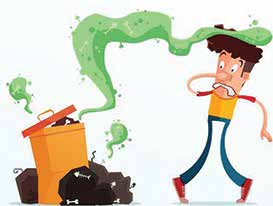
Toxic Chemicals. Toxic materials that were once getting buried at the landfill or disposed of properly just won’t be taken care of for perhaps a good long time (depending on the nature of the disaster). For instance, one toxic chemical produced by garbage is methane emissions. Methane is a gas that is 86 times more potent than carbon dioxide.
Water Contamination. While even landfills in some places have been known to contaminate our water today, garbage toxins and bacteria can become a real threat to areas that previously weren’t troubled by it.
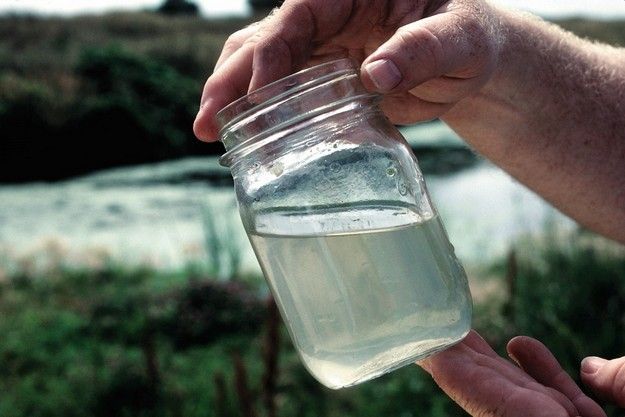
Land Contamination. Additionally, garbage contaminates our soil, disrupts the natural biome needed to properly grow food, and can become contaminated with carcinogens and other toxins.
With these happy thoughts in mind, let’s move to a few ways we can prepare for such an unpleasant situation. First, what to do if you’re in a more rural setting:
But what do you do if you live in the city? Even in a short-term disaster (such as that produced by Hurricane Katrina, as an example), garbage can become a huge issue. There wasn’t much burning or burying going on in the city of New Orleans then.
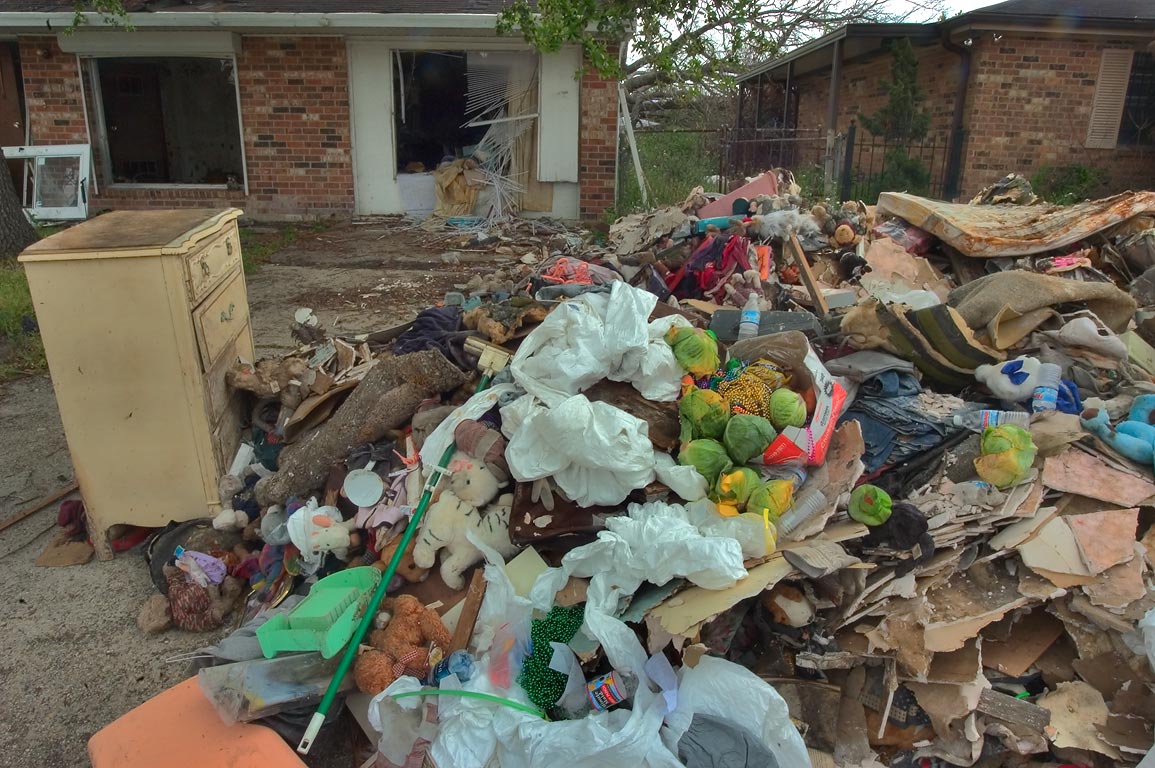
So back to the above-mentioned point of “survival mode.” As a stop-gap measure, burning and burying will work, but you have to think it through NOW. Since city living means neighbors are in closer proximity, you’ll want to talk to them and plan together for addressing your neighborhood garbage issues. A primary burn/bury location could be decided upon NOW.
Then one or two neighbors could volunteer to keep a large metal burn container on hand. (It can do double duty as an end table when upturned and covered with a pretty cloth.)

I know this hasn’t been the most pleasant subject to share, but there are just some things we need to think about—garbage being one. Preparing NOW means easier coping later, after all.

We ought to think about it, because it’s a serious issue and could very well be part of our picture if this country’s infrastructure collapses (like some people believe it will).
Garbage is one of the biggest threats we face during a long-term disaster. Specifically:
The Threat of Illness. Garbage pick-up service slip to the bottom of the priority list as municipalities scramble to restore basic services such as electricity and water. This means garbage will accumulate quickly. As waste stops being collected the threat of illness increases. History shows diarrhea and respiratory infections skyrocket.

Bug and Rodent Infestation. Here’s the typical order of things: First come fleas, flies, and gnats. Next, you will begin seeing more ants and cockroaches. And then rats and other rodents move in, along with the diseases they carry.
Unbearable Stench. Even if you are taking care of your own garbage, you have to think of all the other garbage that is just getting tossed out by other people. The stench will be enough to keep you from wanting to walk outside.

Toxic Chemicals. Toxic materials that were once getting buried at the landfill or disposed of properly just won’t be taken care of for perhaps a good long time (depending on the nature of the disaster). For instance, one toxic chemical produced by garbage is methane emissions. Methane is a gas that is 86 times more potent than carbon dioxide.
Water Contamination. While even landfills in some places have been known to contaminate our water today, garbage toxins and bacteria can become a real threat to areas that previously weren’t troubled by it.

Land Contamination. Additionally, garbage contaminates our soil, disrupts the natural biome needed to properly grow food, and can become contaminated with carcinogens and other toxins.
With these happy thoughts in mind, let’s move to a few ways we can prepare for such an unpleasant situation. First, what to do if you’re in a more rural setting:
- Burn it. Burning garbage isn’t the healthiest solution, but it’s been done for thousands of years and is a good stop-gap measure. It’s true that most urban areas don’t allow this, but it’s still done in many rural areas of the U.S. So here’s the deal: the fact of the matter is, in a disaster folks move into survival mode, and allowances are made for this. So if you’re an urbanite, burn anyway, but do it at night (it’s harder for people to see the the smoke so it’s harder for them to find your location).
- Bury it. If you’re dealing with a long-term disaster, and you can’t or don’t want to burn your trash, then bury it. In fact, even if you do decide to burn, there will still be some things you can’t burn (such as human waste). Be very careful to never bury trash next to a water source and never did a pit below the water table level. And you might want to think about a good burn and bury site on your property now.
- Think inclusively. In other words, consider the needs of others as you plan. If you have neighbors with pets or animals on their property, you could be sure to have a large metal container on hand for collecting food scraps that you’d share with them. This is a thoughtful way to minimize your waste, as well.
- Compost, if space allows it. It’s an easy way to turn your organic waste into a valuable resource.
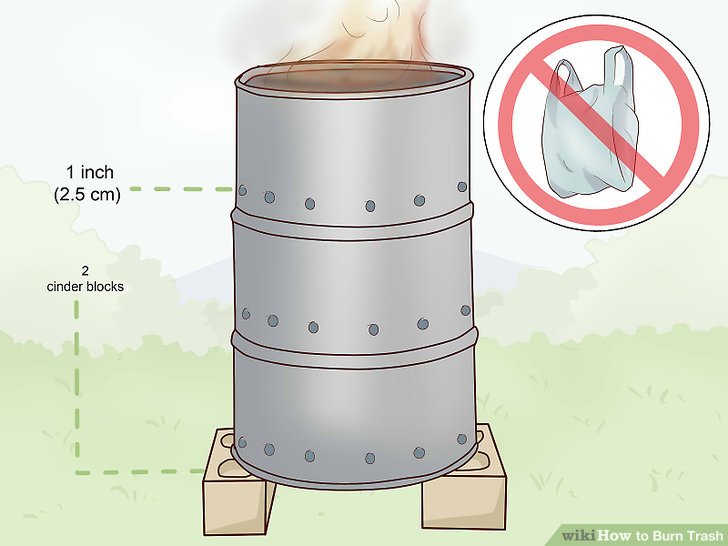
But what do you do if you live in the city? Even in a short-term disaster (such as that produced by Hurricane Katrina, as an example), garbage can become a huge issue. There wasn’t much burning or burying going on in the city of New Orleans then.

So back to the above-mentioned point of “survival mode.” As a stop-gap measure, burning and burying will work, but you have to think it through NOW. Since city living means neighbors are in closer proximity, you’ll want to talk to them and plan together for addressing your neighborhood garbage issues. A primary burn/bury location could be decided upon NOW.
Then one or two neighbors could volunteer to keep a large metal burn container on hand. (It can do double duty as an end table when upturned and covered with a pretty cloth.)

I know this hasn’t been the most pleasant subject to share, but there are just some things we need to think about—garbage being one. Preparing NOW means easier coping later, after all.
Sources:
- www.vicnews.com
- www.globalnews.ca
- www.acs.org
- www.pinterest.com
- www.wikihow.com
- www.asergeev.com
- www.theinspiredroom.net
 Alice Osborne
Alice Osborne
Weekly Newsletter Contributor since 2006
Email the author! alice@dvo.com
